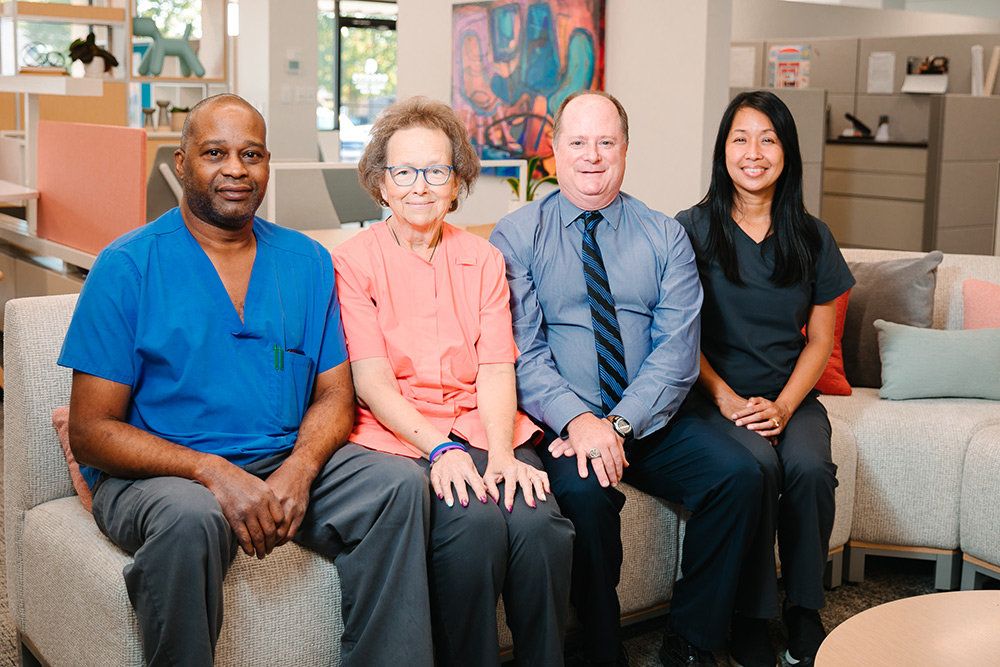YOUR BUSINESS AUTHORITY
Springfield, MO
YOUR BUSINESS AUTHORITY
Springfield, MO

After nearly 40 years serving patients in the Ozarks, Springfield Rehabilitation and Health Care Center faced one of its biggest challenges to date when COVID-19 hit the country.
Administrator Troy Lacey learned about the novel virus’ rampage at a long-term care facility in Kirkland, Washington, where 38 patients died, and he worked quickly to avoid a similar outcome for the Springfield long-term care and skilled-nursing facility.
“Regular temperature checks, symptoms screening and potential exposures became the new normal,” he says. “Fourteen-day quarantines felt harsh, however this is how we could make sure COVID-19 wasn’t entering from the community because testing was scarce.”
Personal protective equipment was in short supply for health care systems, too, so while SRHCC’s owner, National HealthCare Corp., searched for gear, Lacey says his team got creative.
“Can’t find gowns? Go get the (Centers for Disease Control and Prevention) approved grade of trash bags to use for gowns. Can’t get medical masks? Buy yards of fabric and find seamstresses to make reusable, CDC-approved face masks. Can’t get hand sanitizer? Find a recipe for rubbing alcohol and aloe vera gel,” he says. “We surely did not have ideal PPE, nonetheless, we were prepared.”
As of early November, three SRHCC patients tested positive for COVID-19 and one patient died, Lacey says. About eight staff members have tested positive with no hospitalizations. The facility continues to be under lockdown.
And that led to another battle – the lack of connections and heightened mental health challenges associated with COVID-19.
“We needed strong connections with providers, families and peers to really combat this looming depression from isolation,” Lacey says.
SRHCC quickly began using telehealth services to connect patients with providers, and staff became well-versed in Zoom, Skype, FaceTime and Google Duo to connect residents with their loved ones. Letters, emails and phone calls also ramped up, he says.
“Many of our residents had never used a tablet or a laptop before, but have become very familiar with this technology out of necessity,” he says. “It is rewarding to be able to teach an elder something after all they have taught us.”
Lacey says staff morale was another battle, and creativity came in play again to boost it. Gratitude parades, potlucks, theme days and mask decorating contests were added to the staff culture, he says, adding, “What is most important for our partners, and always have been is affirmations – showing appreciation.”
In many ways, the COVID-19 pandemic was a moment for SRHCC to show what it’s always been made of. Lacey says the health care provider served 500 patients in 2019 from all walks of life, but its motto centers around finding a better way every day to care for its patients, which range from in their 20s to 100-plus.
Lacey says its founder, Dr. Carl Adams, had a vision in 1971 to provide better care for seniors and resisted long-term care as “warehousing the elderly until their death.”
He says patients have included retired professional athletes, farmers getting joints replaced after years of wear and tear, and geniuses who have developed dementia. SRHCC offers short- and long-stay rehabilitation, long-term care, end-of-life services, respite stays and outpatient therapies, including physical, occupational and speech.
“We believe that care should respect the individual and promote recovery, well-being and independence,” Lacey says. “We believe in celebrating life every day with our residents.”
Missouri State University’s science building, built in 1971 and formerly called Temple Hall, is being reconstructed and updated.
Anyone who supported lockdowns and masking should be disqualified!